8.1: Equivalent to $2(x+3)$
Select all the expressions equivalent to $2(x+3)$.
- $2 \boldcdot (x+3) $
- $(x + 3)2 $
- $2 \boldcdot x + 2 \boldcdot 3$
- $2 \boldcdot x + 3 $
- $(2 \boldcdot x) + 3$
- $(2 + x)3$
Let’s use hangers to understand two different ways of solving equations with parentheses.
Select all the expressions equivalent to $2(x+3)$.
Explain why either of these equations could represent this hanger:
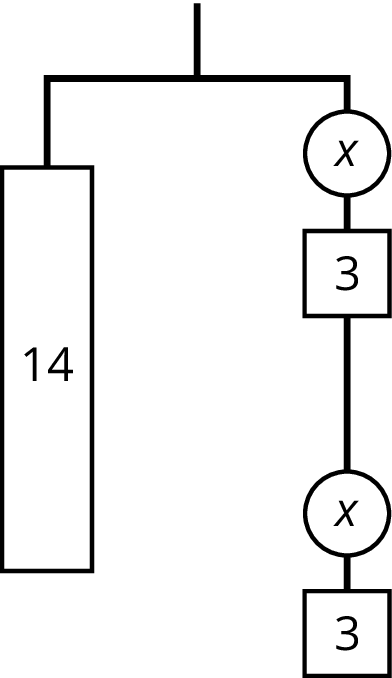
$14=2(x+3)$ or $14=2x+6$
Here are some balanced hangers. Each piece is labeled with its weight.
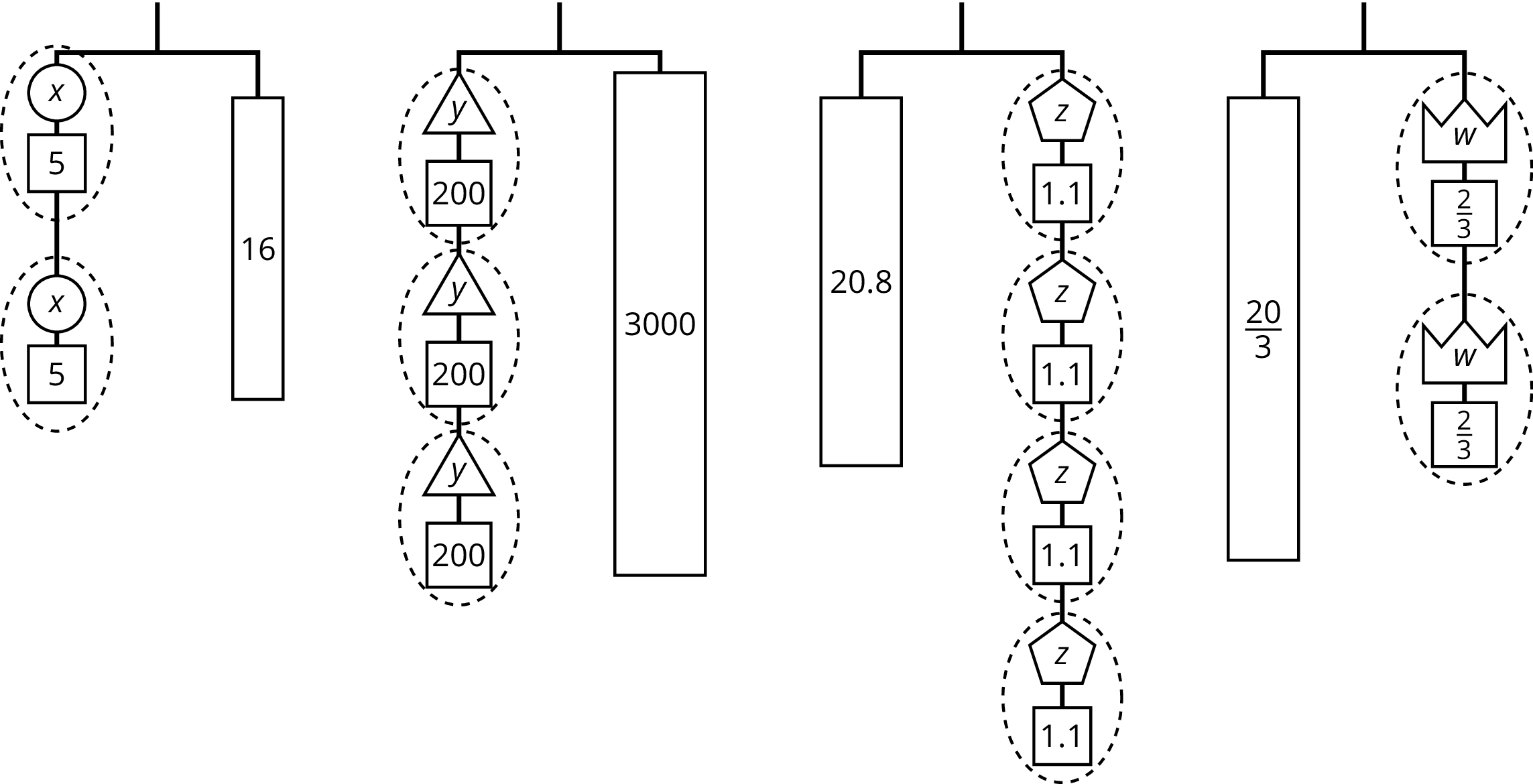
For each diagram:
$2(x+5)=16$
$3(y+200)=3\!,000$
$20.8=4(z+1.1)$
$\frac{20}{3}=2\left(w+\frac23\right)$
The balanced hanger shows 3 equal, unknown weights and 3 2-unit weights on the left and an 18-unit weight on the right.
There are 3 unknown weights plus 6 units of weight on the left. We could represent this balanced hanger with an equation and solve the equation the same way we did before.
\(\begin {align} 3x+6&=18 \\ 3x&=12 \\ x&=4 \\ \end{align}\)
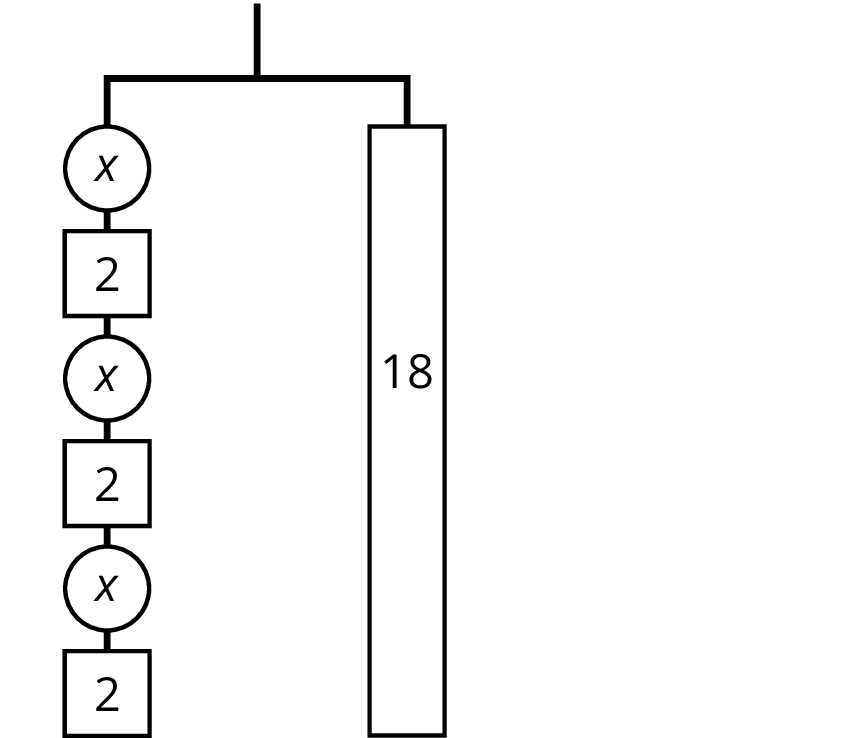
Since there are 3 groups of $x+2$ on the left, we could represent this hanger with a different equation: $3(x+2)=18$.

The two sides of the hanger balance with these weights: 3 groups of $x+2$ on one side, and 18, or 3 groups of 6, on the other side.
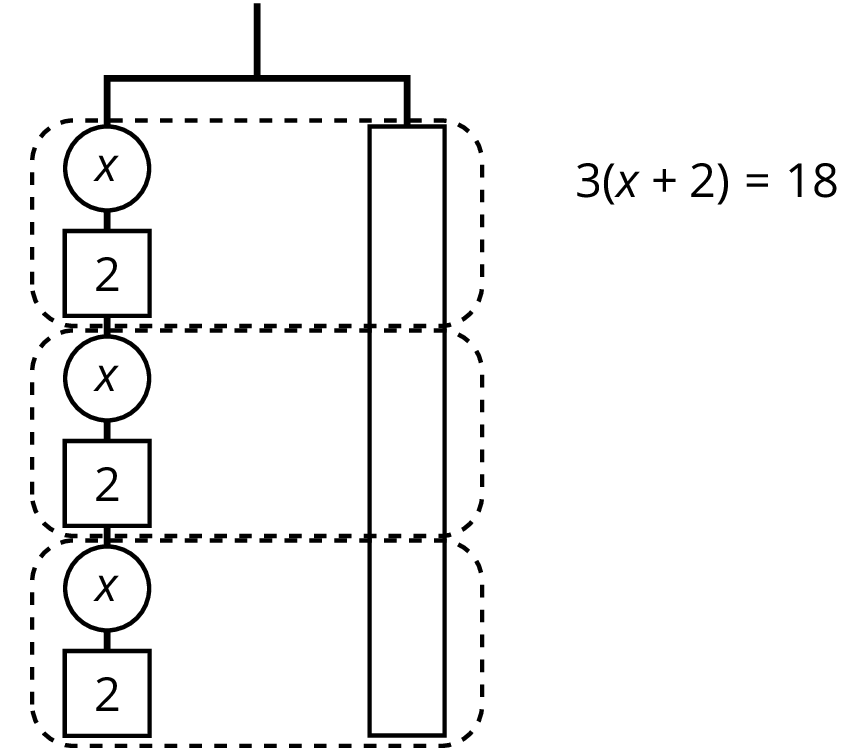
The two sides of the hanger will balance with $\frac13$ of the weight on each side: $\frac13 \boldcdot 3(x+2) = \frac13 \boldcdot 18$.

We can remove 2 units of weight from each side, and the hanger will stay balanced. This is the same as subtracting 2 from each side of the equation.
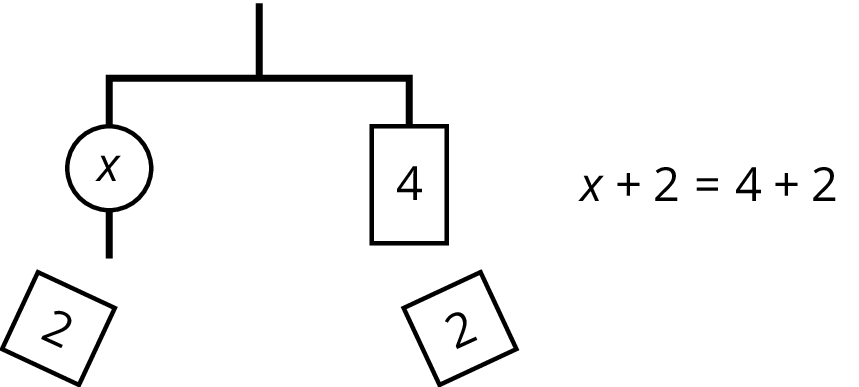
An equation for the new balanced hanger is $x=4$. This gives the solution to the original equation.
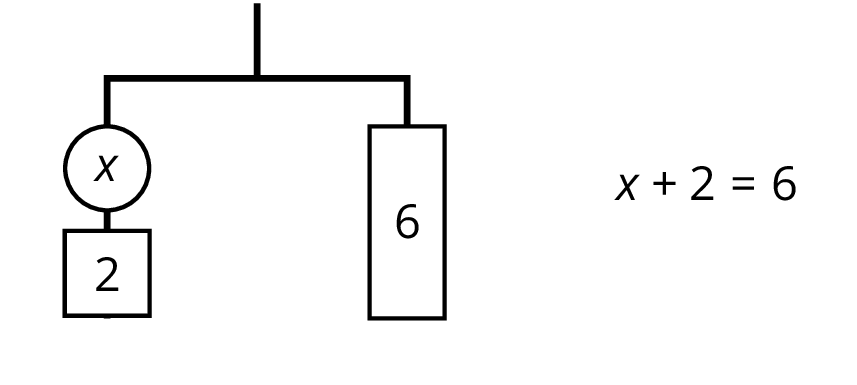
Here is a concise way to write the steps above:
\(\begin{align} 3(x+2) &= 18 \\ x + 2 &= 6 & \text{after multiplying each side by } \tfrac13 \\ x &= 4 & \text{after subtracting 2 from each side} \\ \end{align} \)